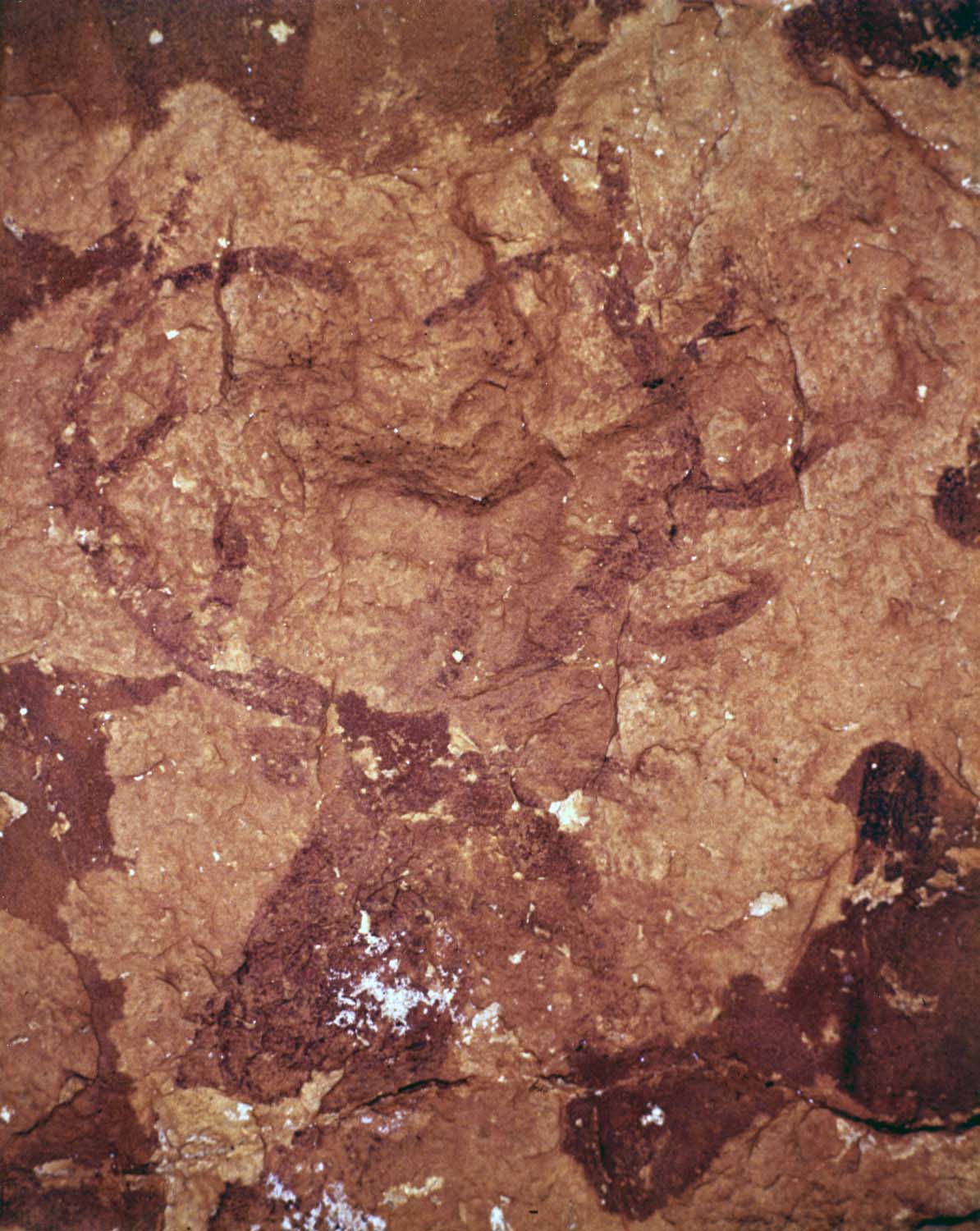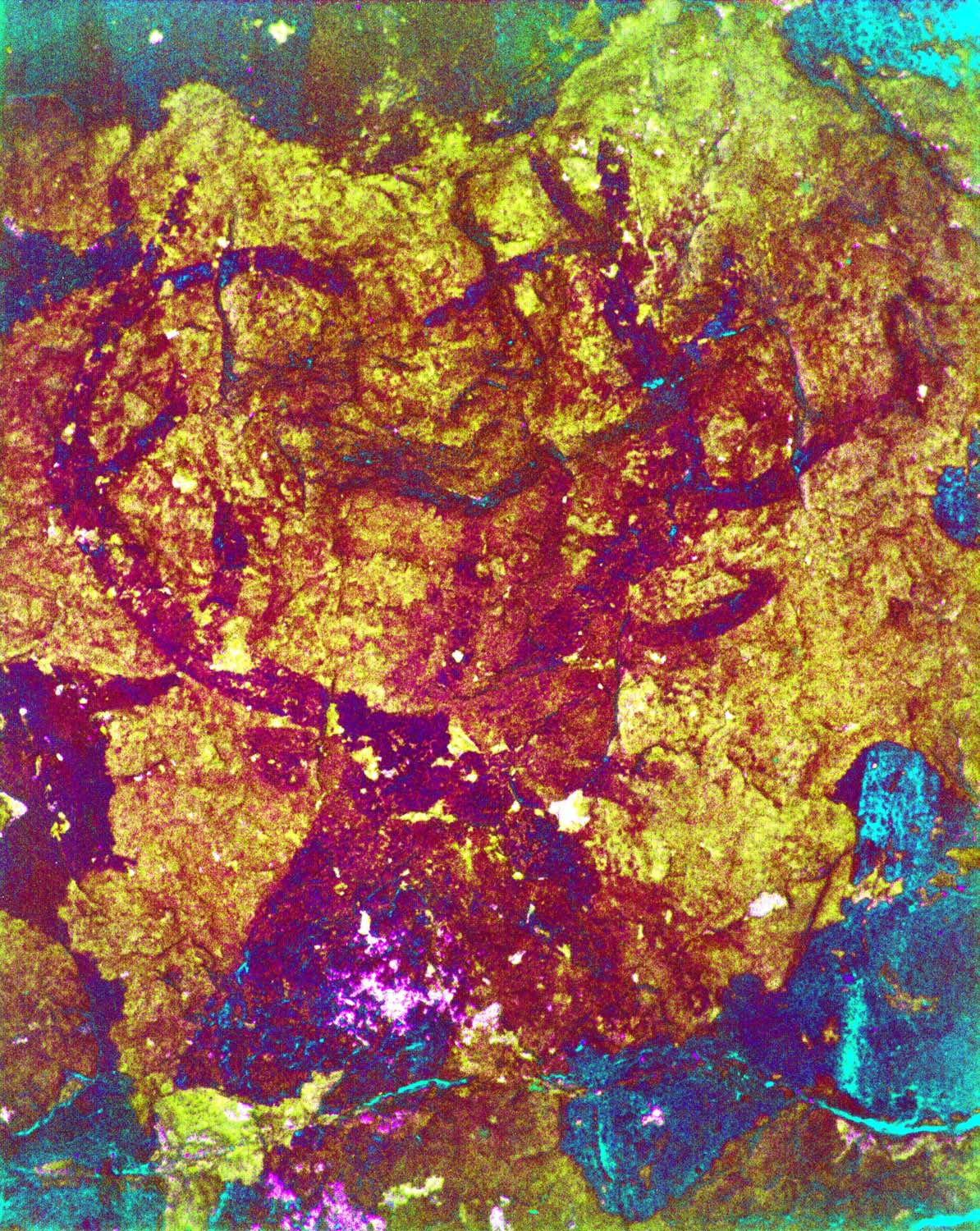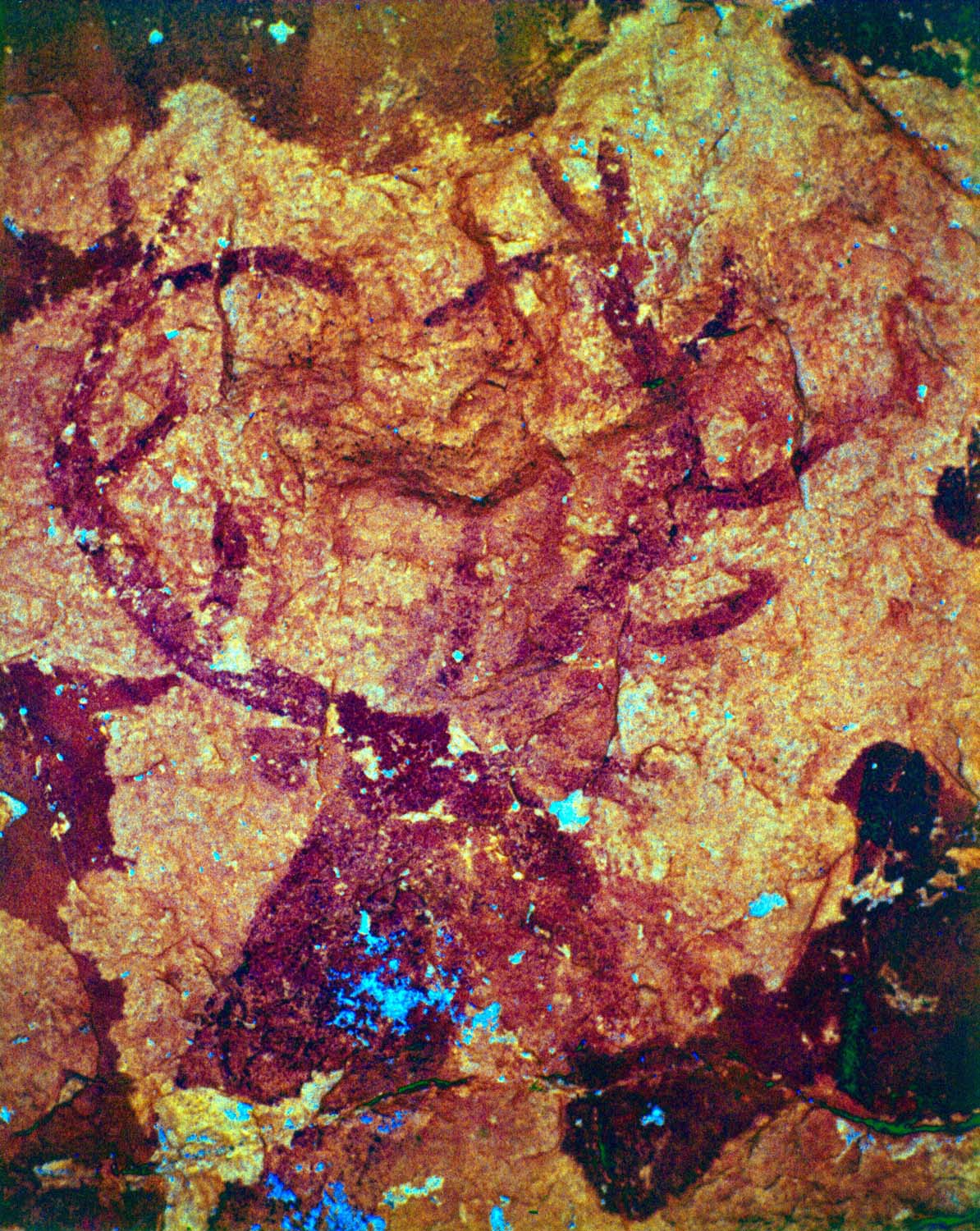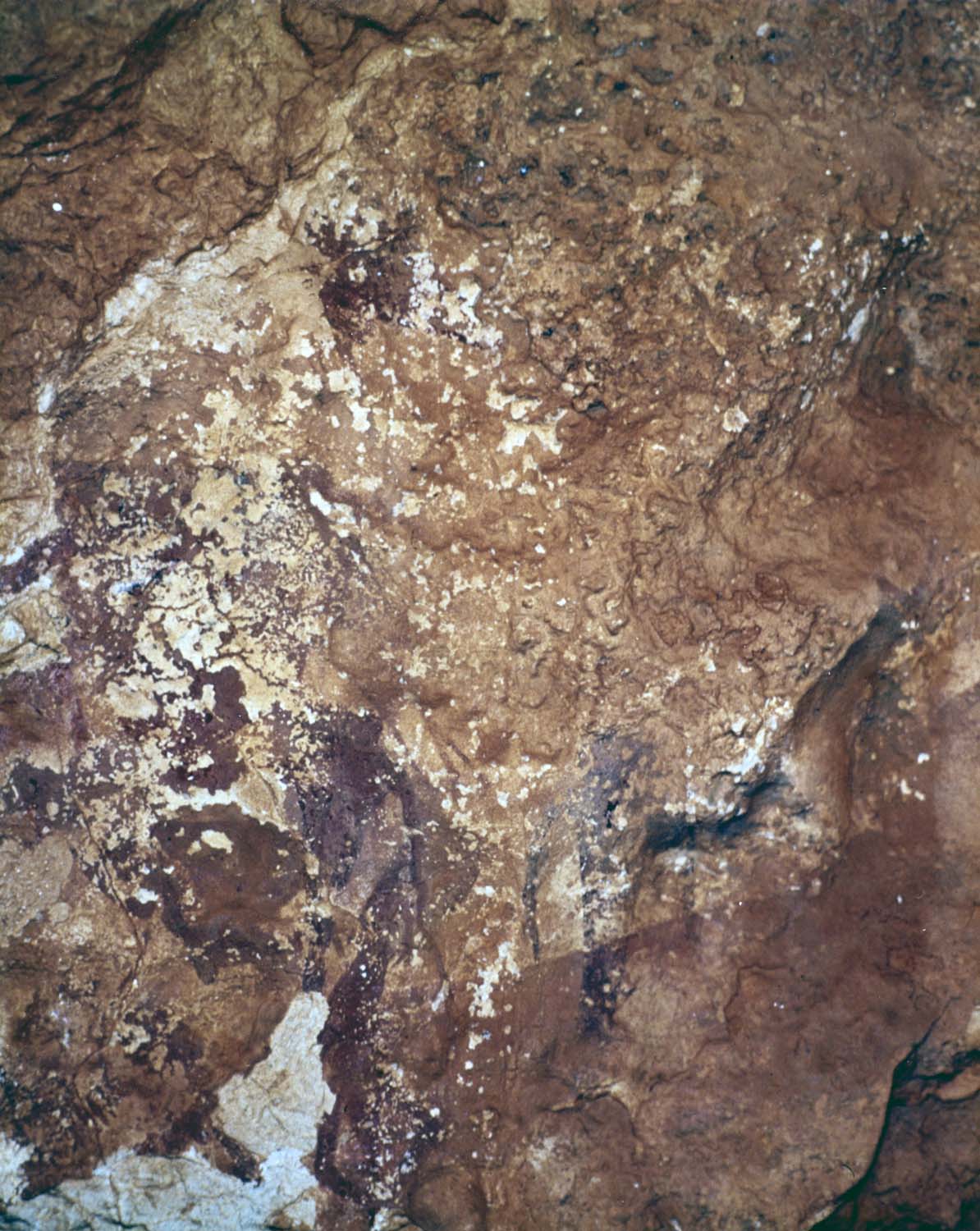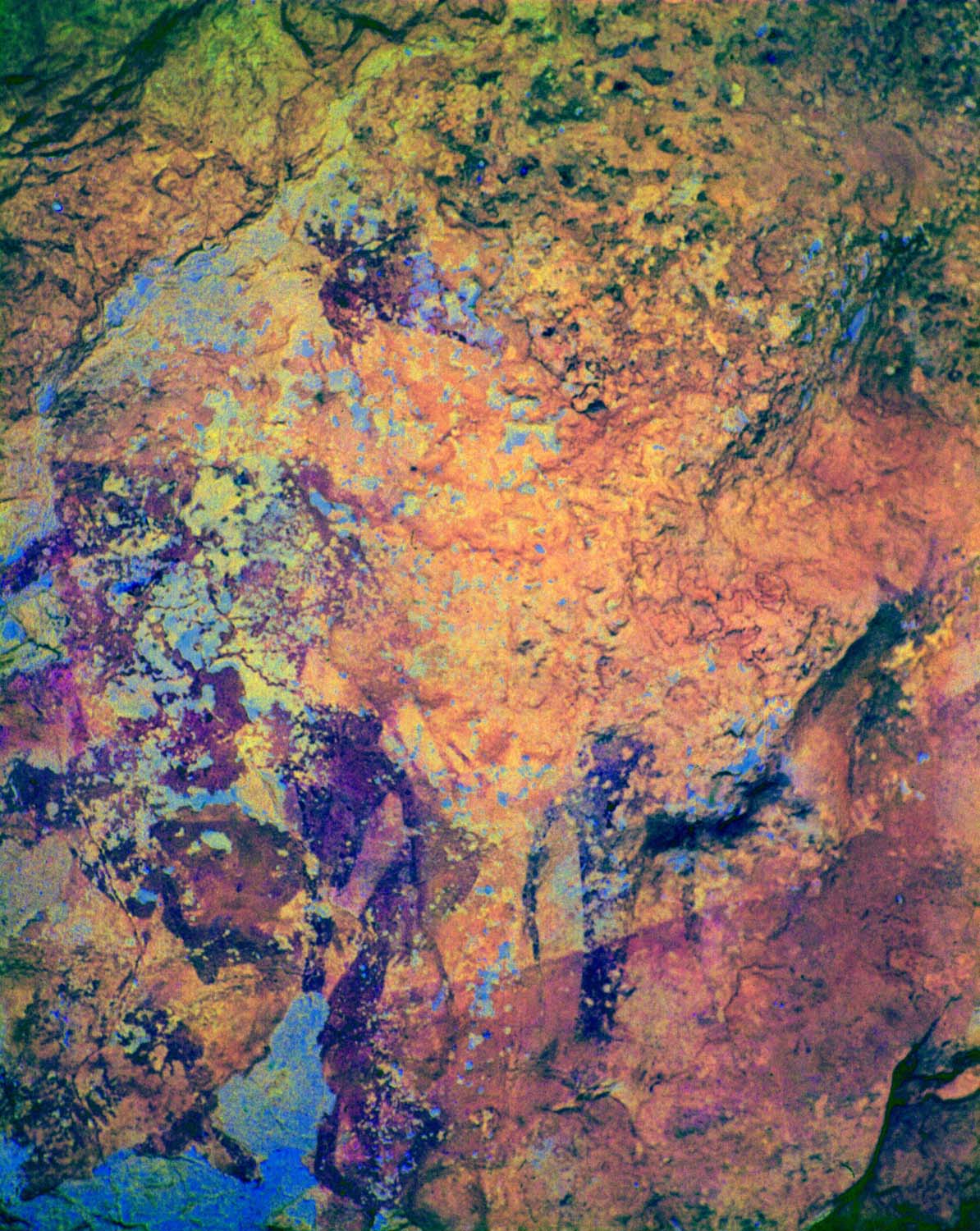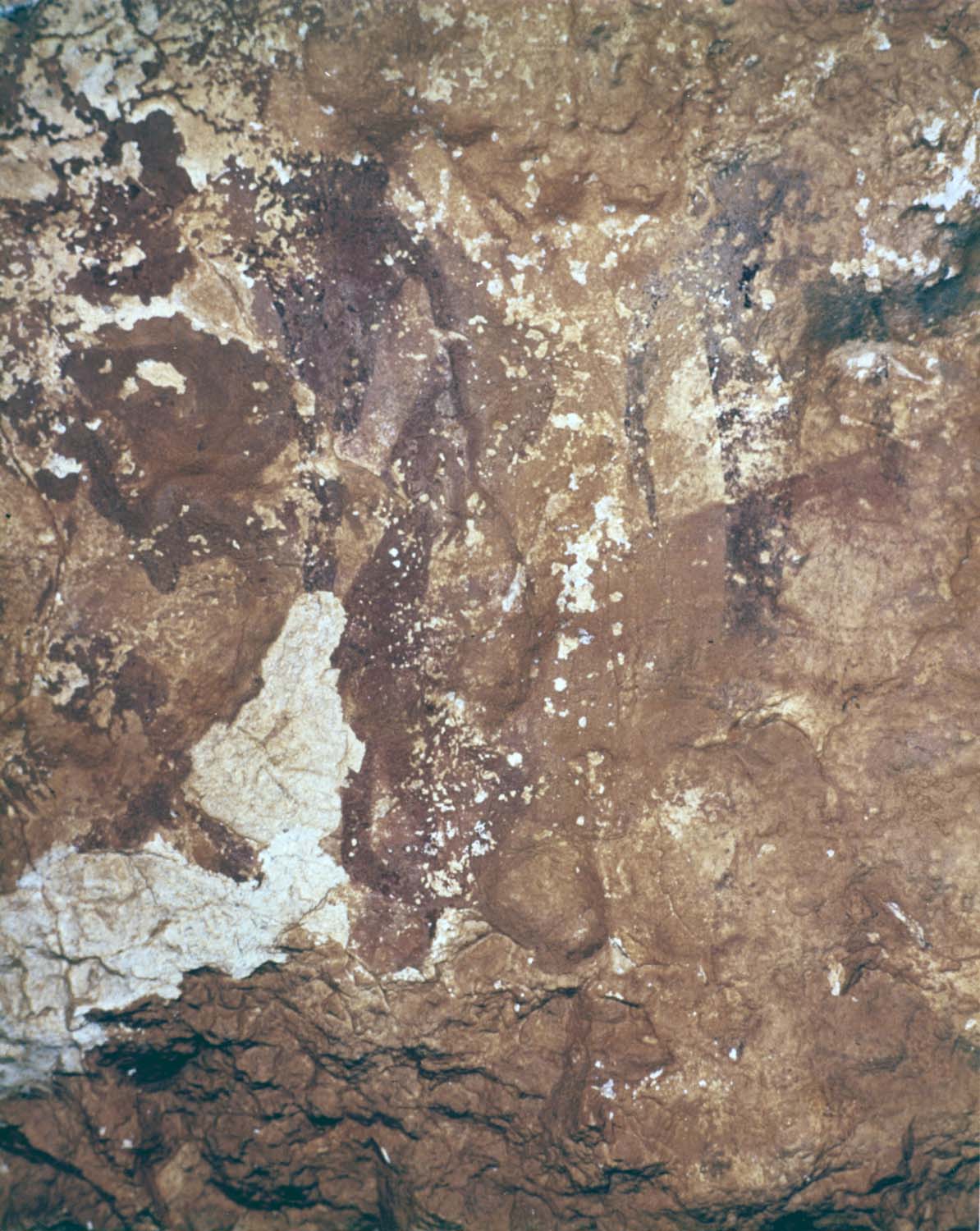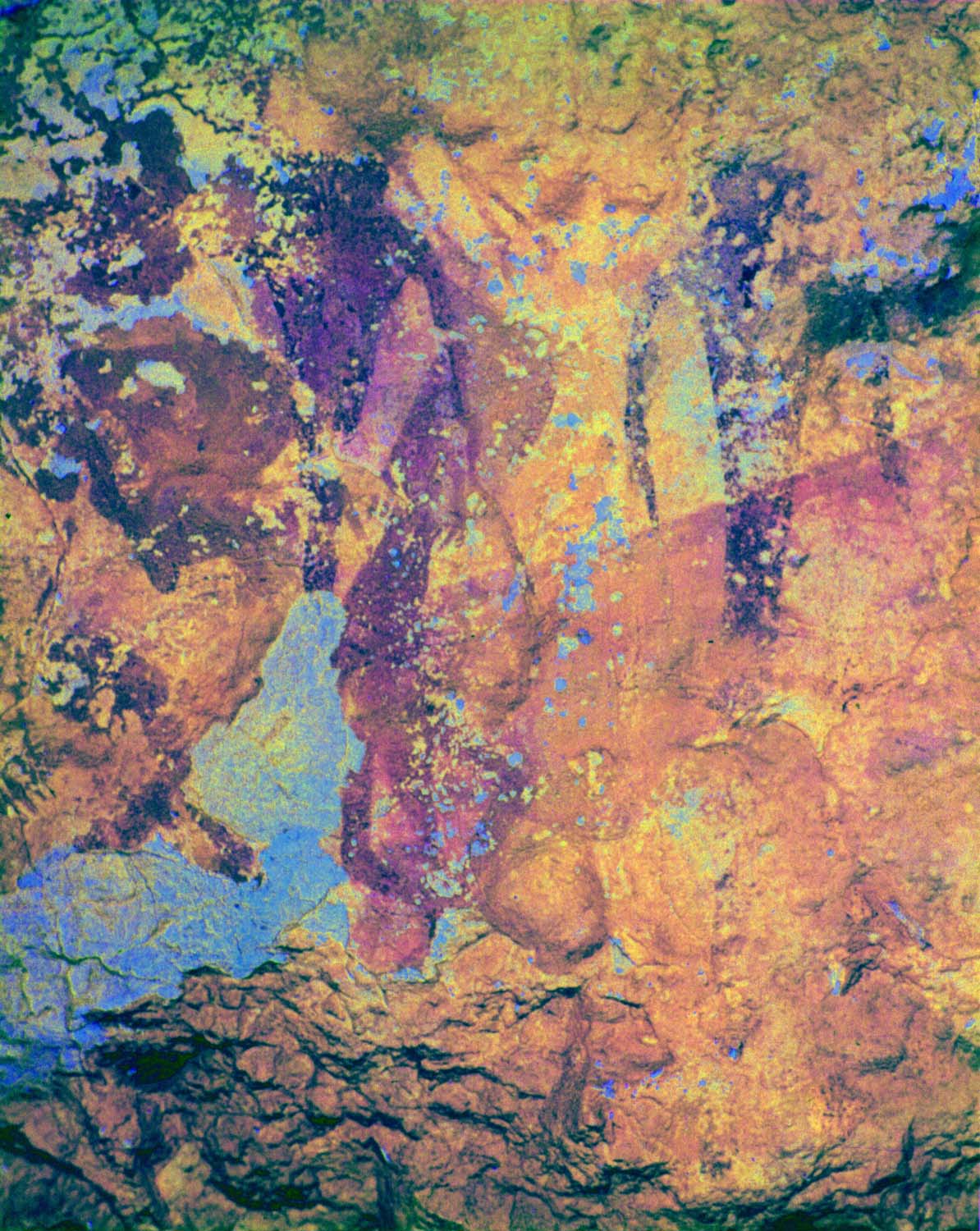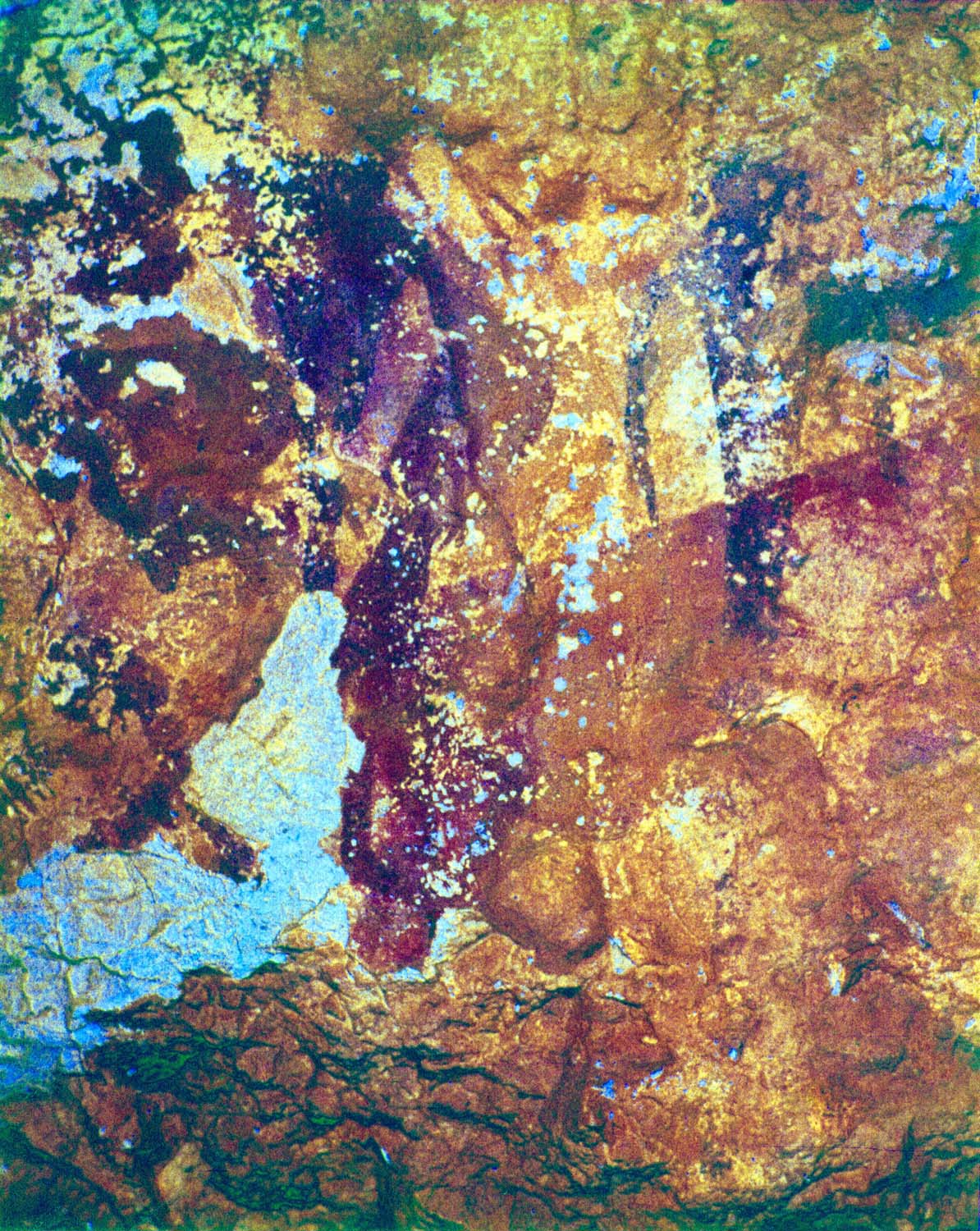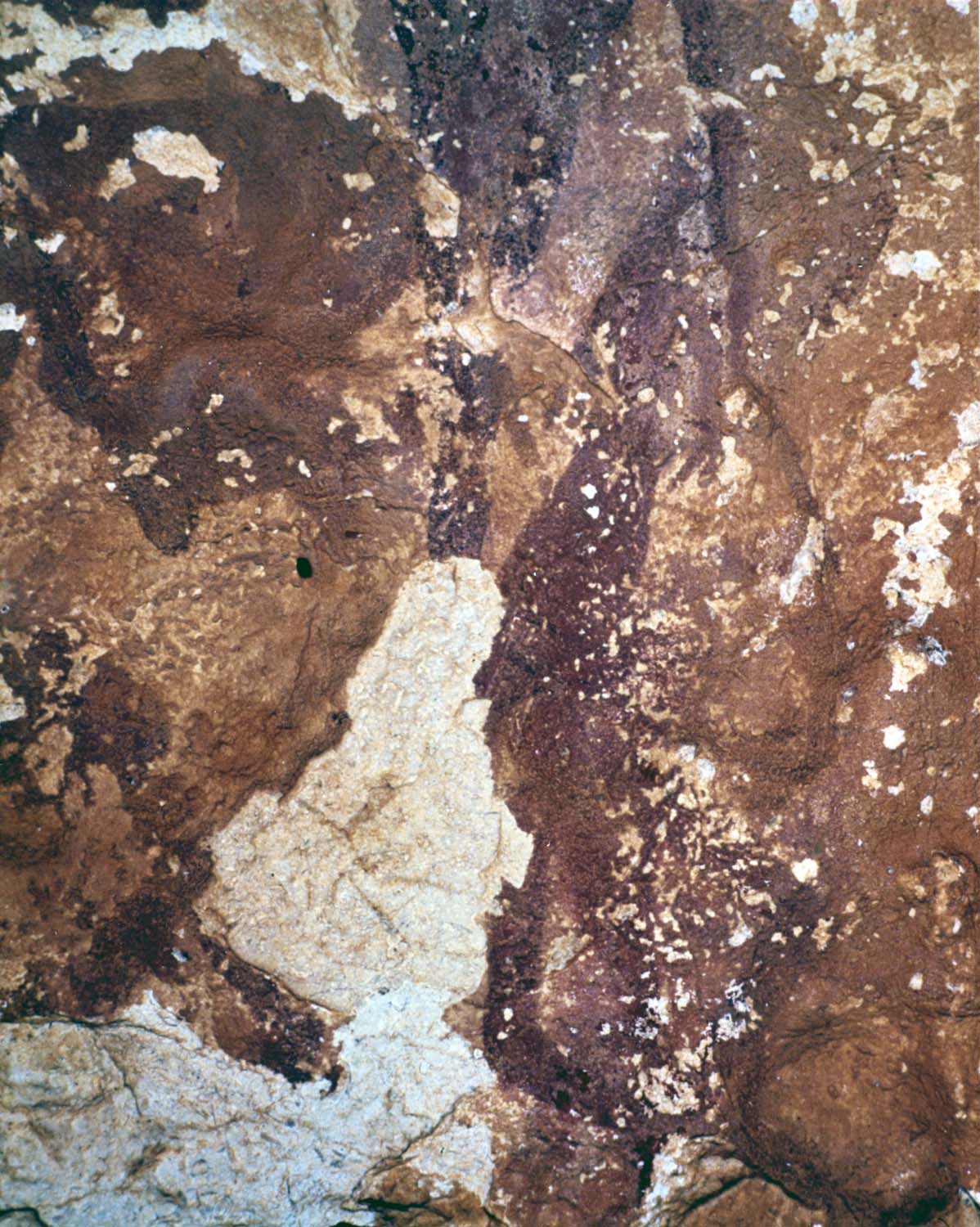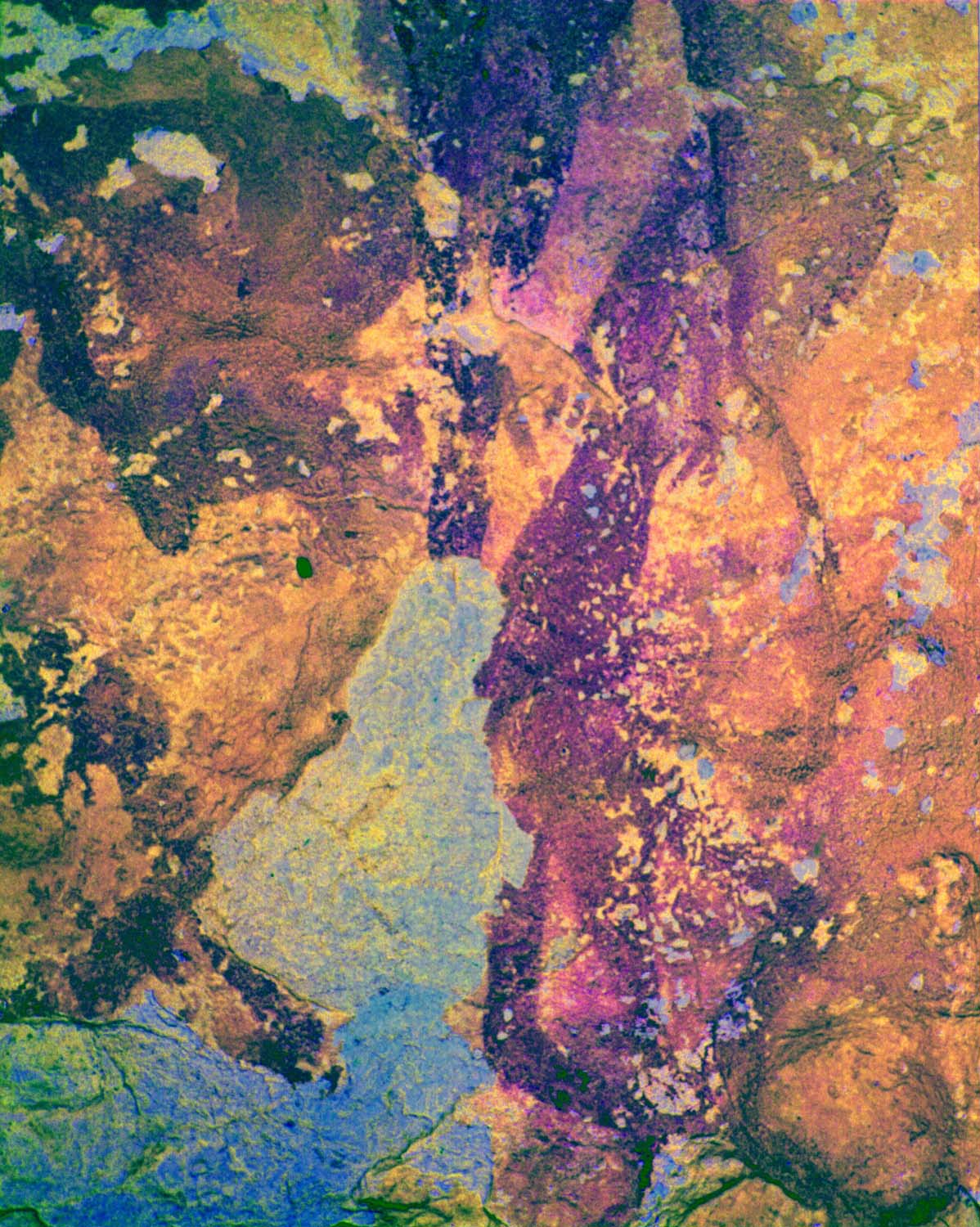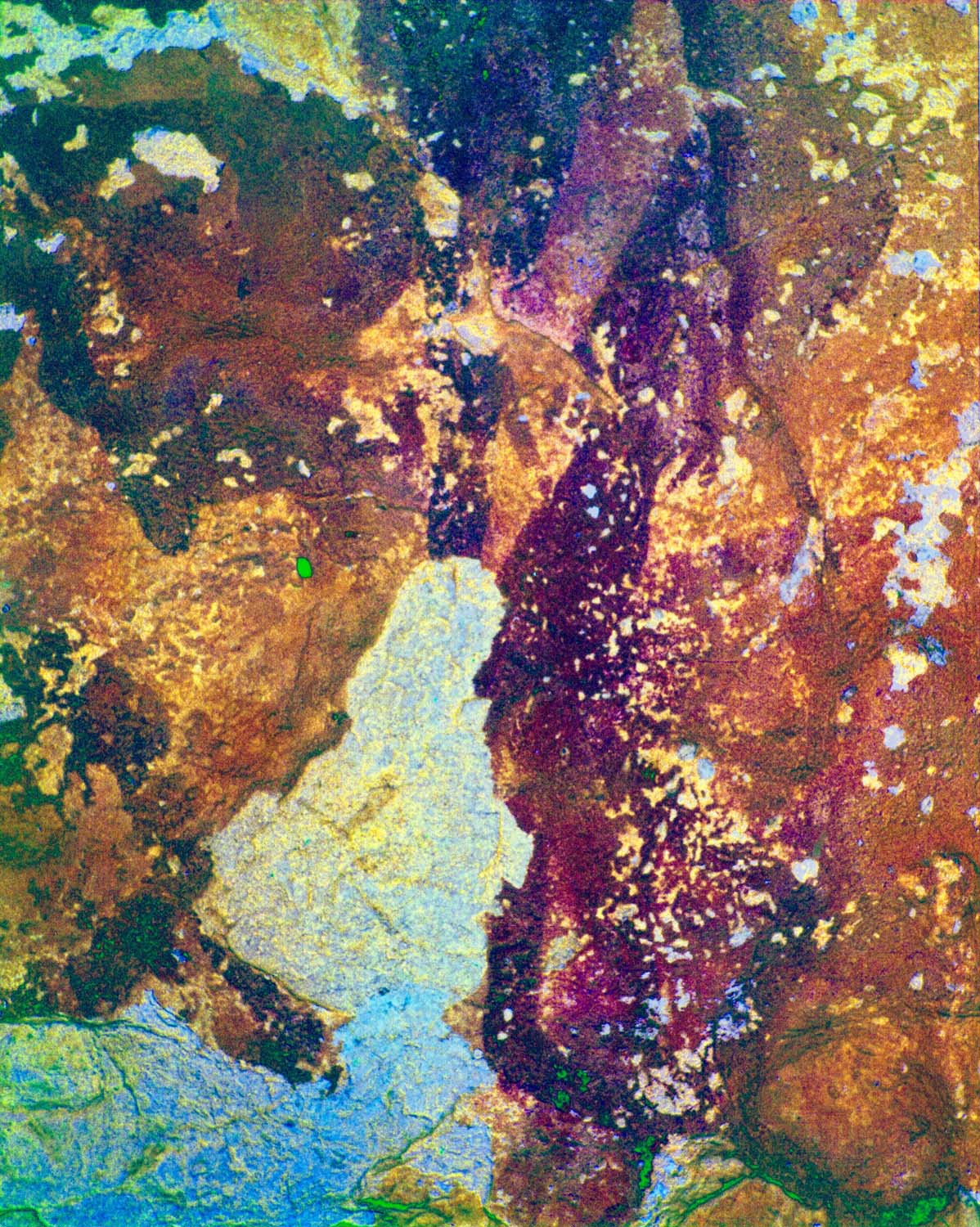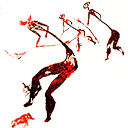CIngle dels tolls del Puntal
Este cingle se halla situado en la base del cerro del Puntal, sobre el cauce de La Valltorta, y en las inmediaciones del barranc de Matamoros. Su mural, con escasa visera de protección, se encuentra en el área central del paredón. La composición está integrada por figuras humanas y los restos de dos ciervos. La mayoría de las imágenes se hallan recubiertas por las concreciones o afectadas por los enormes desconchados que ocupan gran parte del cantil.
Entre las figuras humanas aparecen varias que suponemos masculinas, en posición estática, y una femenina, a juzgar por su larga falda. En general su aspecto es más bien tosco, mientras que los ciervos, de color rojo pálido y apenas visibles, son de tipo realista. Uno de estos ejemplares se superpone a una de las figuras humanas, de color castaño oscuro.
A la izquierda de la citada composición, y delimitado por una concavidad de la pared, se observa el segundo ejemplar de ciervo, con una gran cornamenta. Este animal se halla en posición estática y ocupa el centro de un área deteriorada con grandes desconchados, donde antiguamente residieron otros elementos pictográficos, hoy completamente perdidos. La superposición de estas figuras es de gran interés para el estudio del proceso evolutivo del conjunto de La Valltorta.
VALENCIÀ
Este cingle es troba situat en la base del turó del Puntal, sobre el llit de La Valltorta, i als voltants del barranc de Matamoros. El seu mural, amb escassa visera de protecció, es troba en l’àrea central del mur. La composició està integrada per figures humanes i les restes de dos cervos. La majoria de les imatges es troben recobertes per les concrecions o afectades pels enormes escrostonats que ocupen gran part del penya-segat.
Entre les figures humanes apareixen diverses que suposem masculines, en posició estàtica, i una femenina, si es jutja per la seua llarga falda. En general el seu aspecte és més bé tosc, mentres que els cervos, de color roig pàl·lid i a penes visibles, són de tipus realista. Un d’estos exemplars se superposa a una de les figures humanes, de color castany fosc.
A l’esquerra de l’esmentada composició, i delimitat per una concavitat de la paret, s’observa el segon exemplar de cervo, amb una gran cornamenta. Este animal es troba en posició estàtica i ocupa el centre d’una àrea deteriorada amb grans escrostonats, on antigament van residir altres elements pictogràfics, hui completament perduts. La superposició d’estes figures és de gran interés per a l’estudi del procés evolutiu del conjunt de La Valltorta.
ENGLISH
This rocky outcrop is located at the base of the hill of El Puntal, above the riverbed of La Valltorta, in the area near the Barranc de Matamoros. The mural here, which has only a small overhanging shelf for protection, can be found in the central section of the rock wall. The composition is made up of human figures and what remains of two red deer. Most of the images have been covered over by concretions or affected by the rockfalls that have taken place along much of the cliff.
Among the human figures there appear some that we can assume to be male, in static pose, and one female, judging by the long skirt. In general they are quite crude in appearance, whereas the stags, pale red in colour and hardly visible, are of the realistic type. One of these figures is superimposed over one of the human figures, dark brown in colour.
To the left of this composition, and framed by a cavity in the wall, we can see the second figure of a stag with large horns. This animal is shown in a static pose and occupies the centre of a much-deteriorated area with extensive crumbling, which formerly held other pictographic elements that have now been completely lost. The superposition of these figures is of great interest in studying the evolutive process of the complex of La Valltorta.
